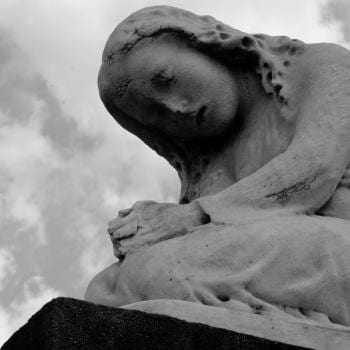In casting about for what to read next, I hit on Stepping Heavenward, by Elizabeth Prentiss.
Reviewing Love Comes Softly made me think about the ways in which Christian fiction have changed over time. Voice in the Wind, published in 1993, felt very different from Love Comes Softly, which was published in 1979. This set me to wondering about what Christian fiction looked like in the much farther past. Stepping Heavenward was published as a serial in 1869.
As an added bonus, Stepping Heavenward was published in the same decade Love Comes Softly was most likely set. Throughout Love Comes Softly, I felt that its author, Janette Oke, was imputing modern religious practice and life outlook into a historical setting without respect for change over time. Stepping Heavenward promises a picture at period practice and outlook.
I first read Stepping Heavenward when I was a young teen. I remember feeling quite grown up when I picked it up, because it was my mother’s book, and I’d seen her reading it many times. The book definitely made its rounds in Christian homeschooling circles.
Stepping Heavenward is loosely autobiographical. It is written in journal form, and follows the life of Katy Mortimer, beginning on her 16th birthday in 1831 and ending in 1858. The book shows us Katy—again, in journal form—as she grows up, marries, and starts a family.
Katy begins as a spirited, passionate teenager and, over the course of her life, struggles with her faith, and with doubts. This being the book that it is, of course, Katy ultimately becomes a strong, mature Christian (at least, these are the terms all the modern reviews use). I want to pick that apart and get at what’s really going on underneath—the fault lines, the untaken paths.
I want to do a full reread before I start this series, so I’m not going to start reviewing today. I’ll finish today by offering a bit more information about the author.
Elizabeth Payson was born in Maine in 1818; her family settled in New York City, where she would spend most of her adult life, in 1831. At age 20, Elizabeth opened a school for girls in her home, and later worked at a girls’ boarding school. At 27, she married George Lewis Prentiss, and became a pastor’s wife, first in Bedford, Massachusetts, and then in New York City.
While her family was part of the new (and rapidly growing) middle class—which offered her things like trips abroad with her family—this didn’t save Elizabeth from losing two of her six children in childhood, or from suffering from chronic illness during most of her life.
Beginning when she was a teen, Elizabeth published pieces in The Youth’s Companion and other religious periodicals. She wrote novels and serials and even a popular hymn, More Love To Thee, O Christ. Stepping Heavenward was her most successful and well-known work.
Stepping Heavenward was published just one year after Louisa May Alcott published Little Women, and the books share many similarities. Both Louisa and Katy, Elizabeth Prentiss’ fictional stand-in, grow up in the middle class (although Louisa’s family struggles somewhat to maintain that standing); both girls are spirited and headstrong as teens. You can think of Stepping Heavenward as an evangelical version of Little Women.
I suspect that for some of you, I have only just now, with this comparison, piqued your interest. In their spirit, I think I’ll pick up Little Women and read it out loud to my children as I commence my reread of Stepping Heavenward, and the carrying out of this review series.
I have a Patreon! Please support my writing!















